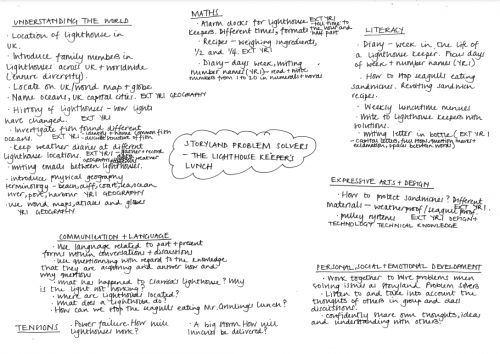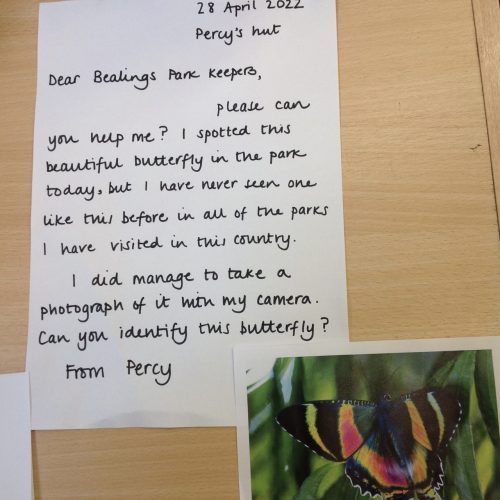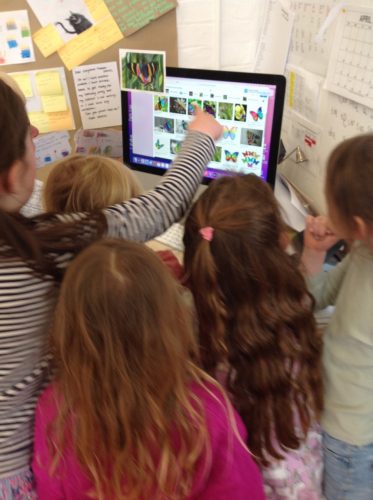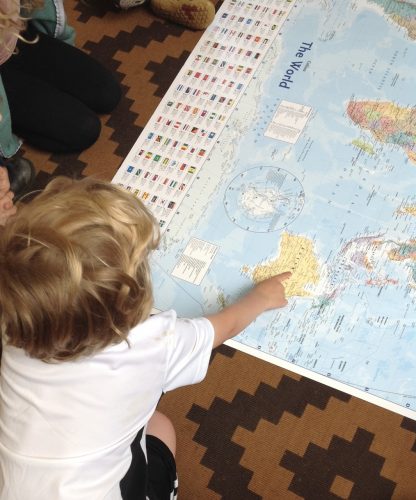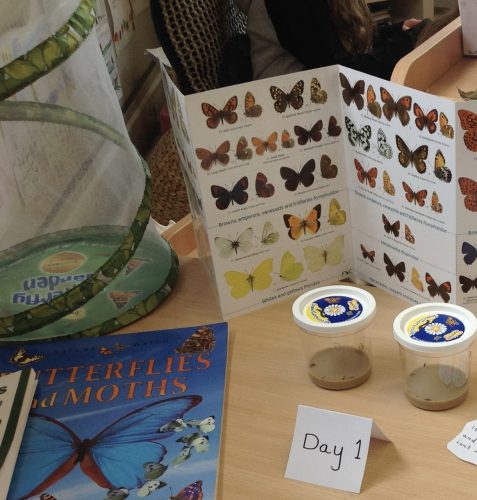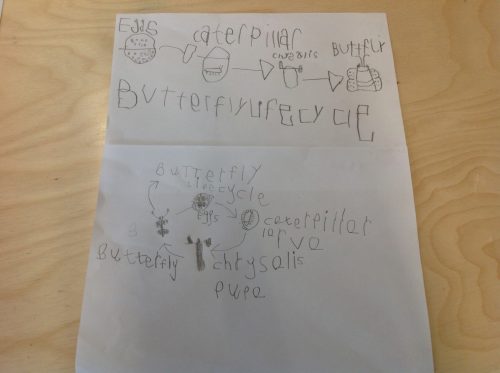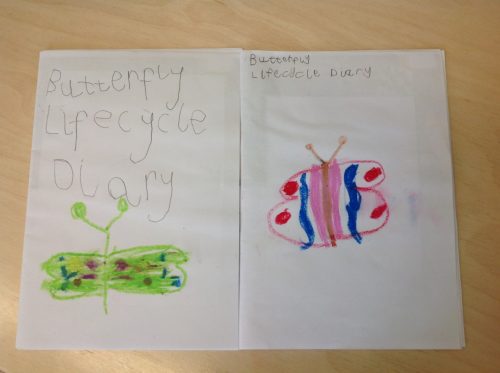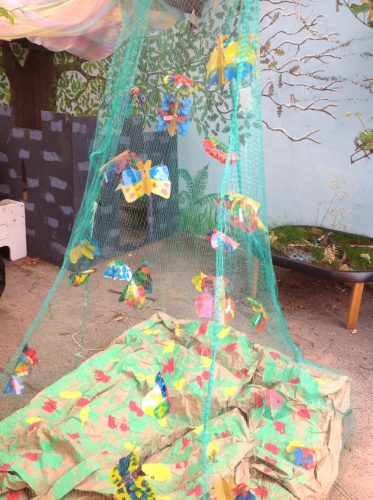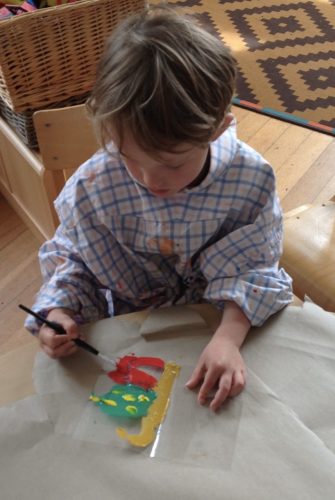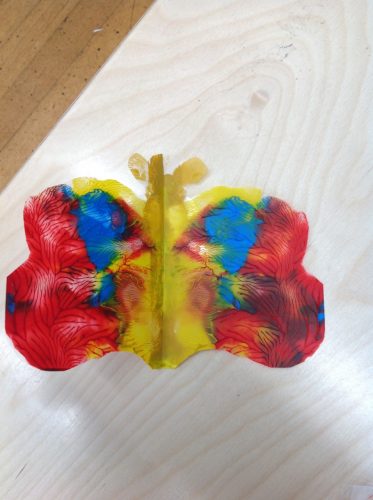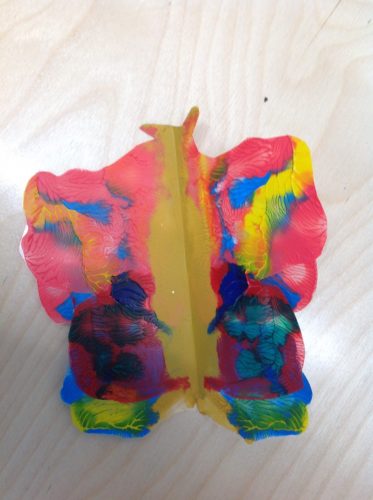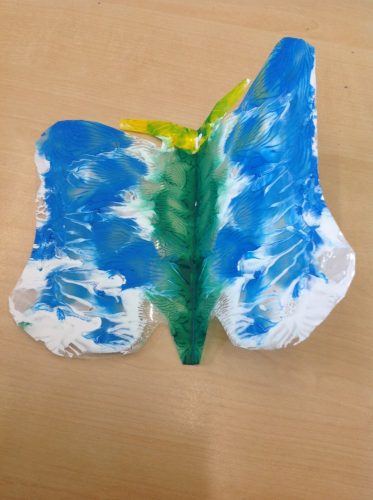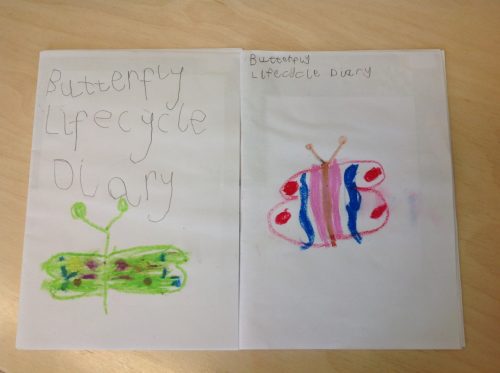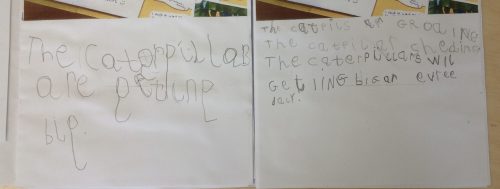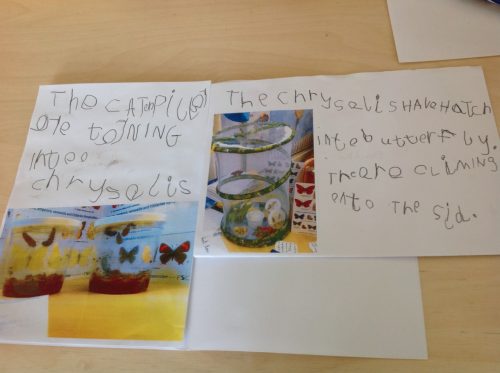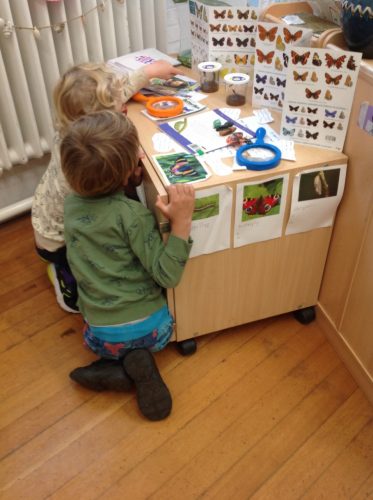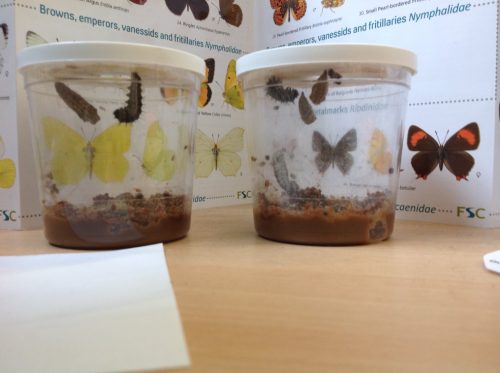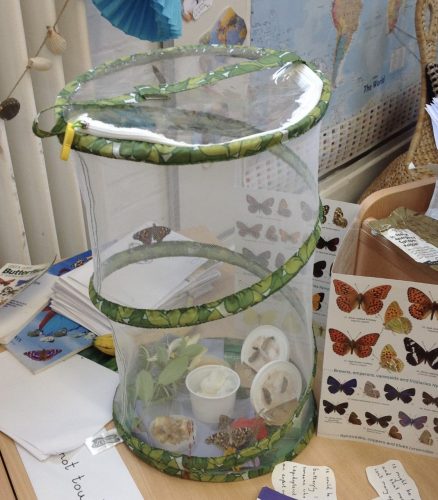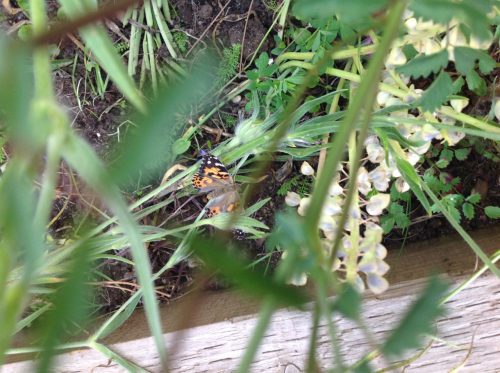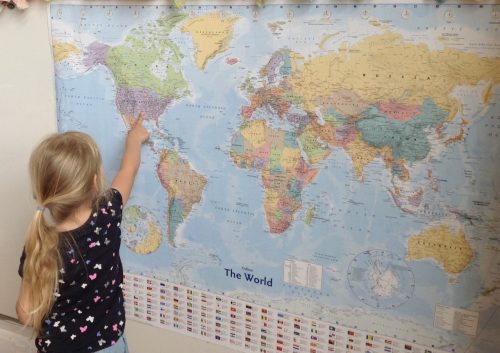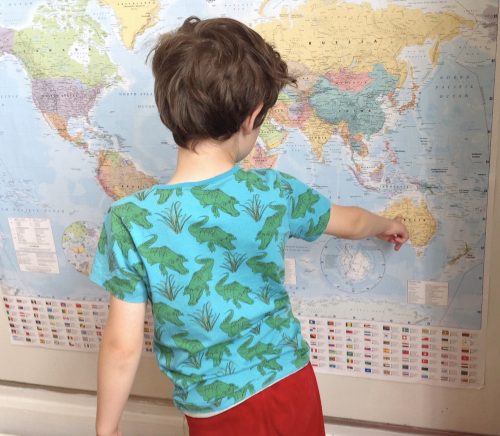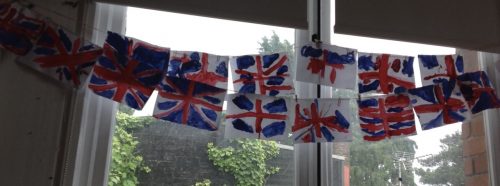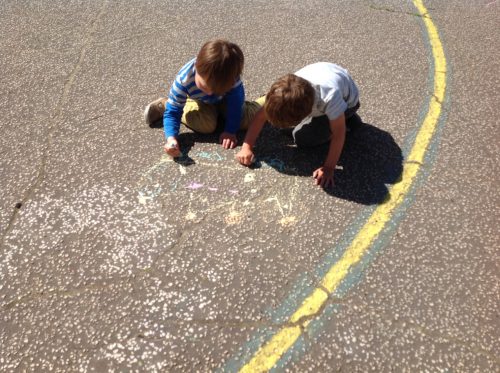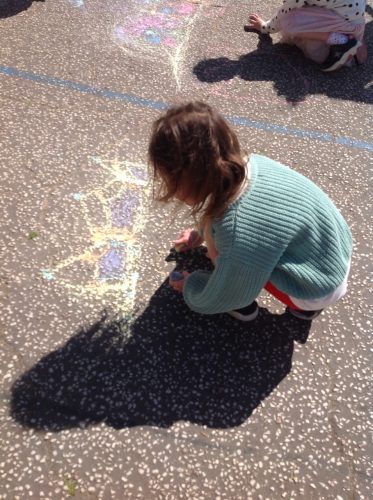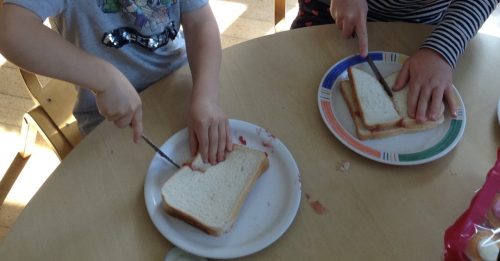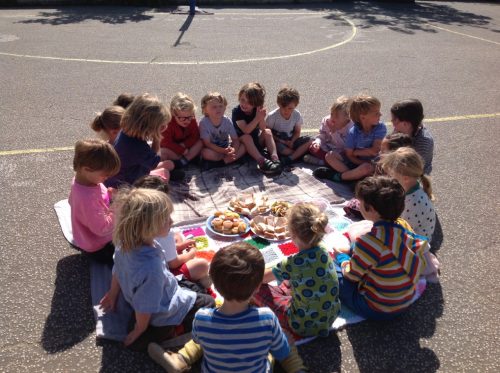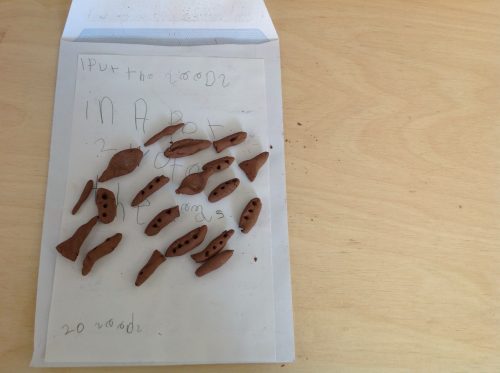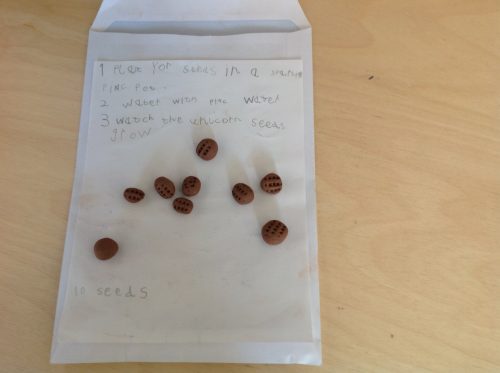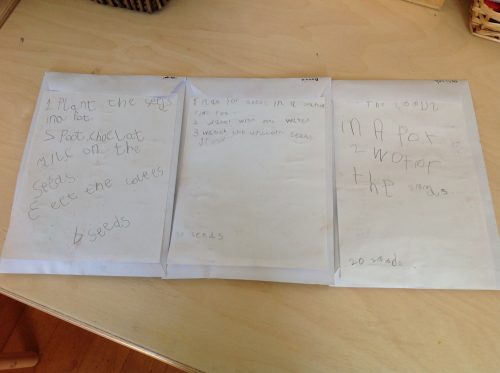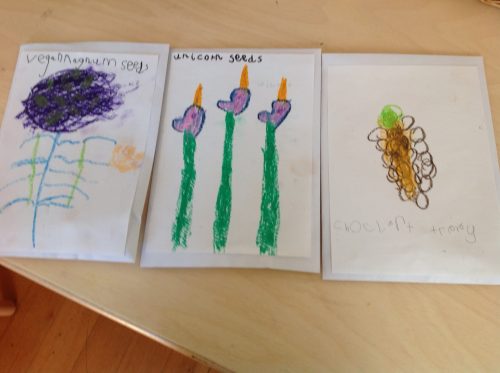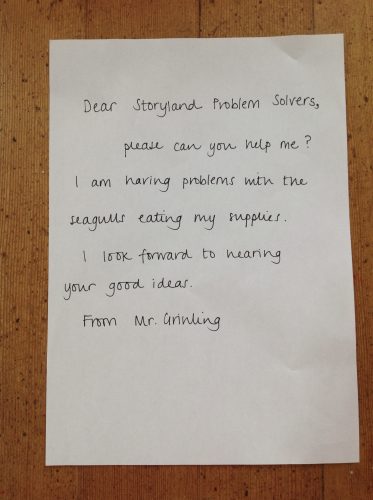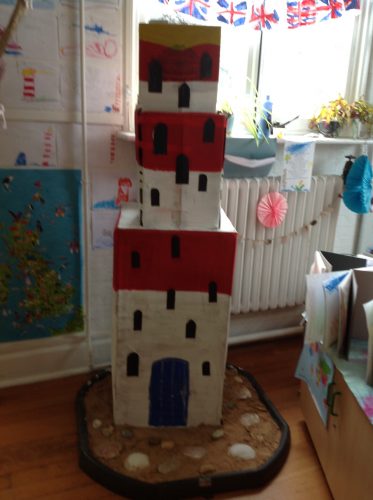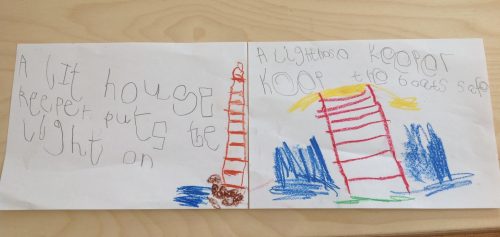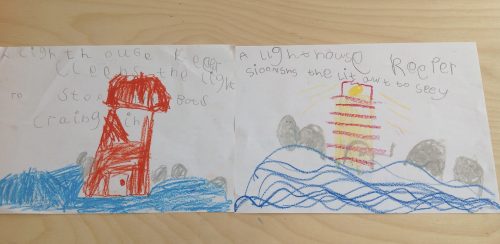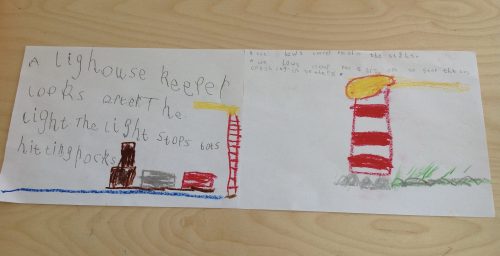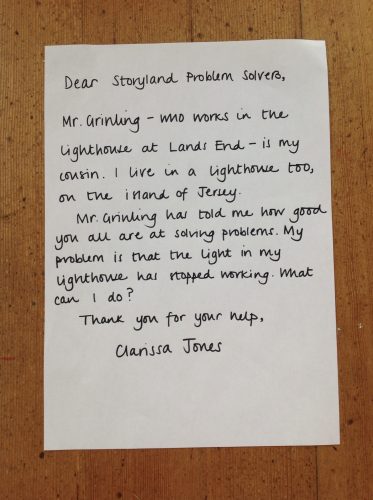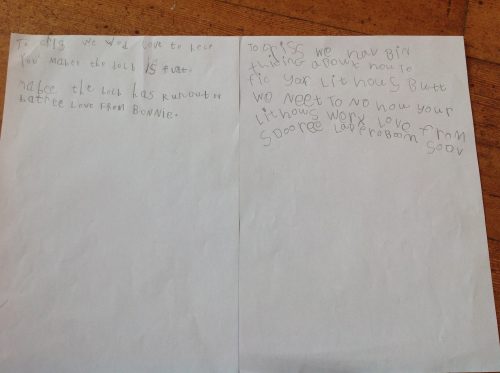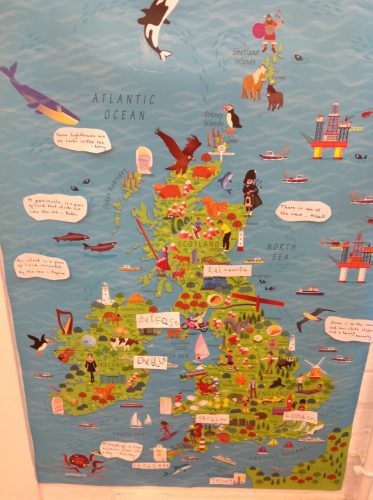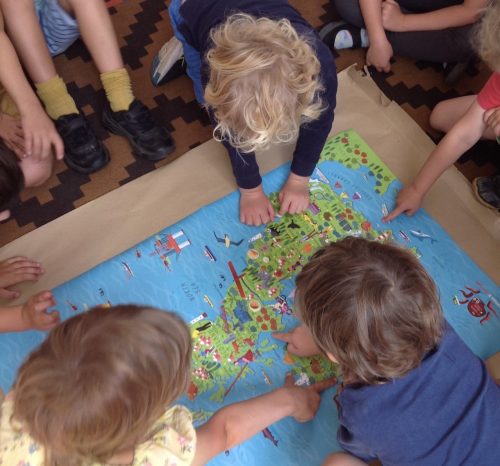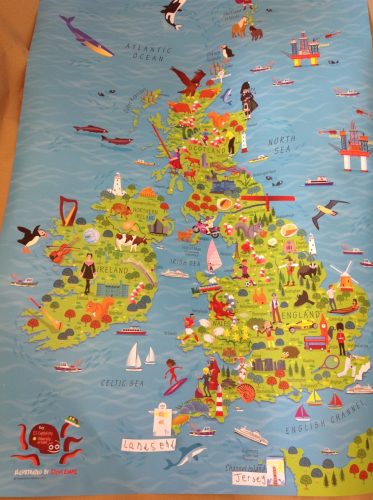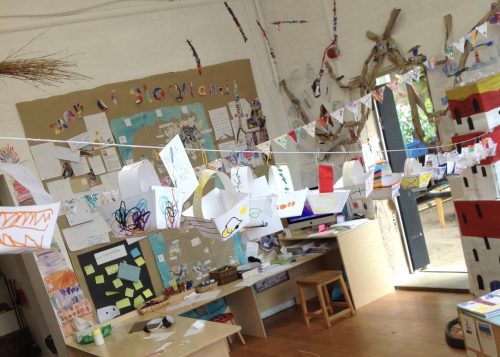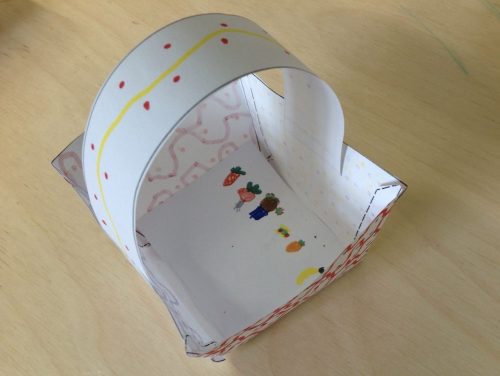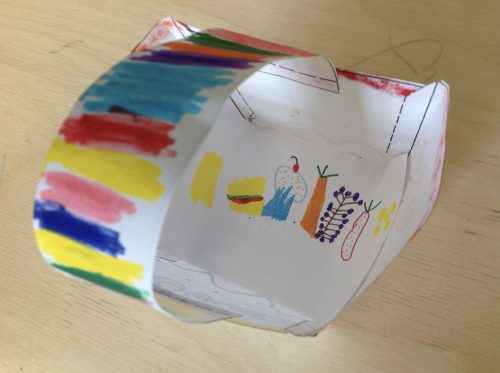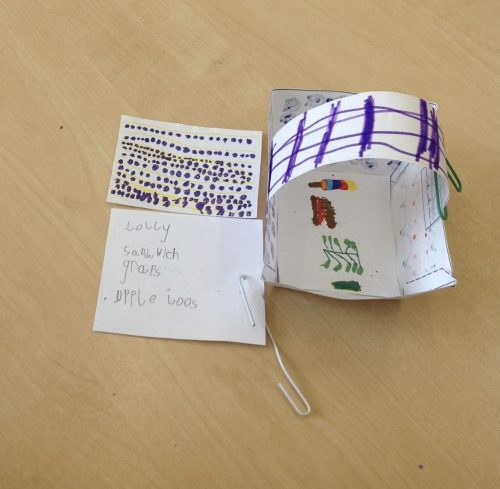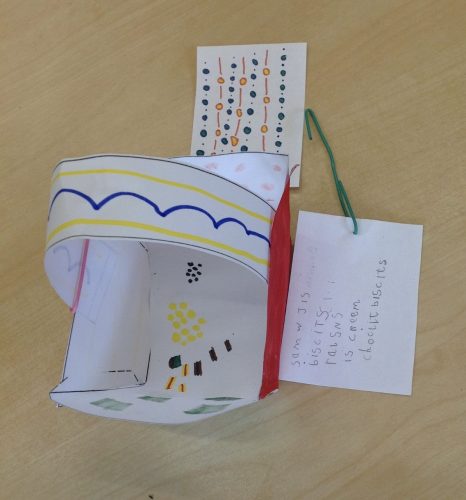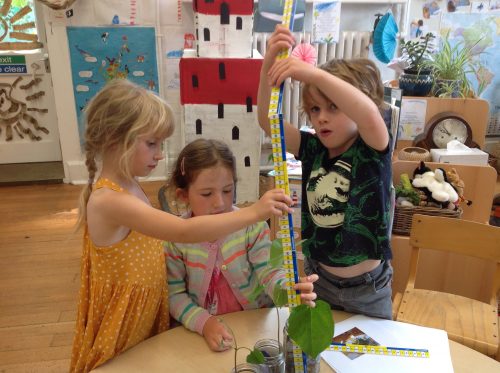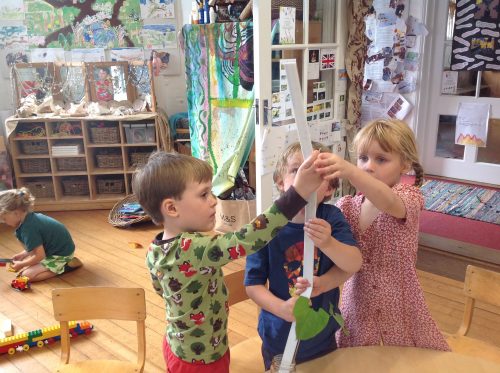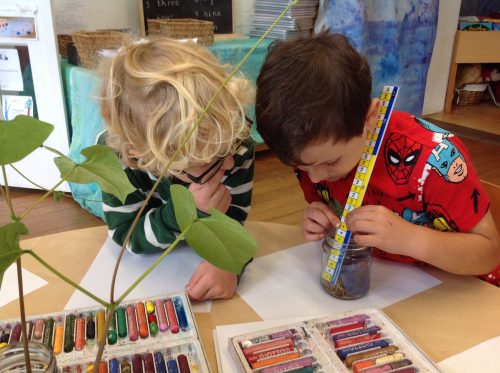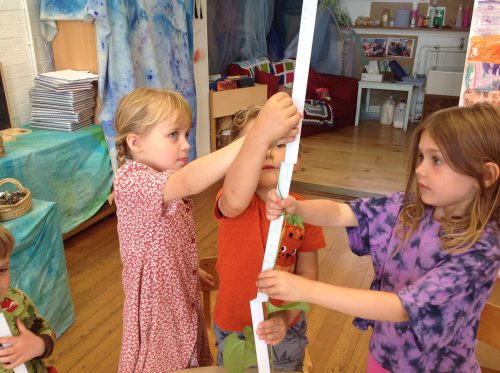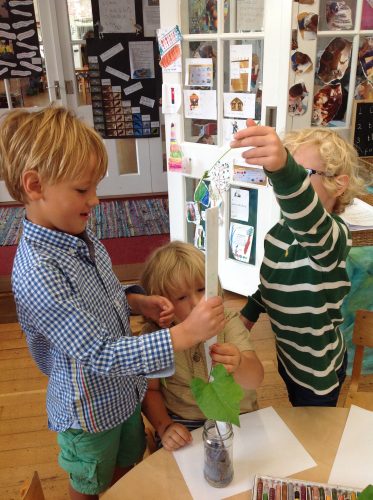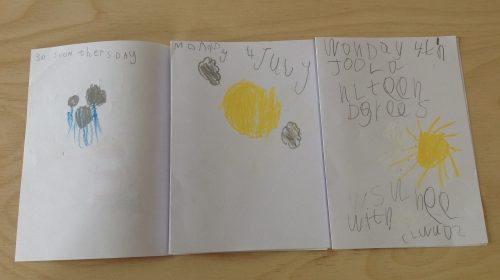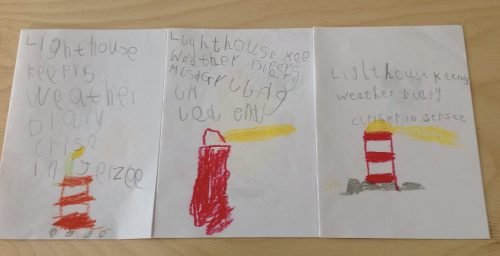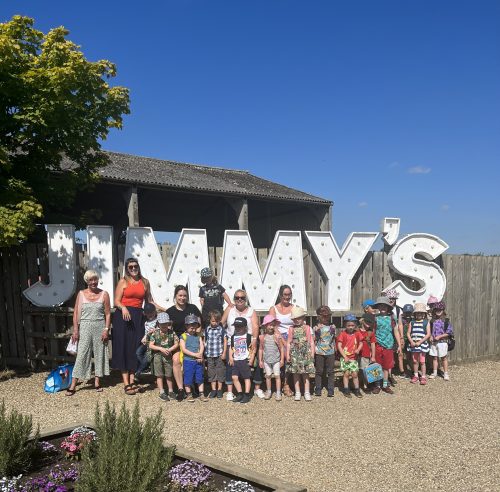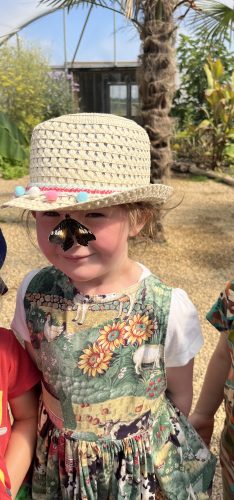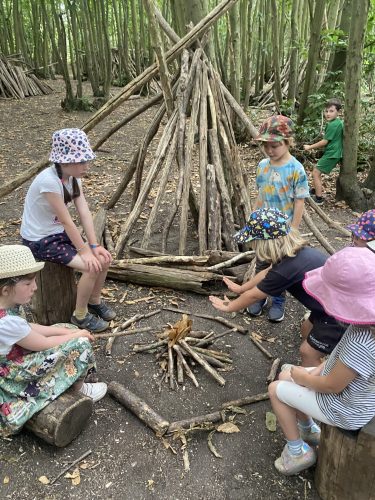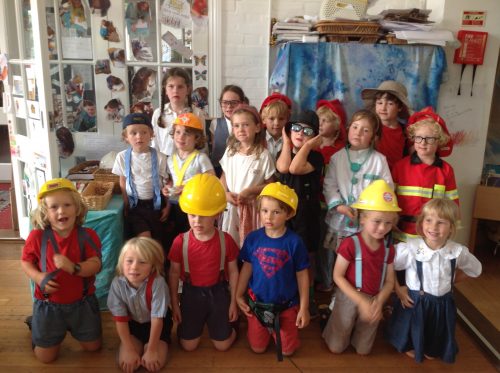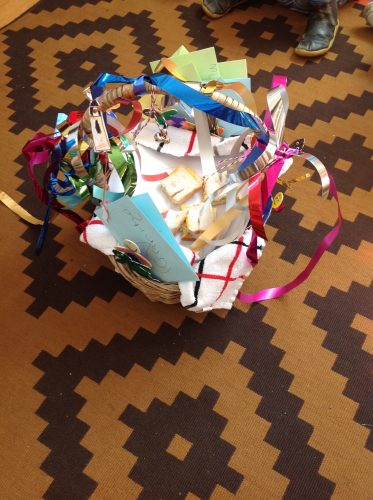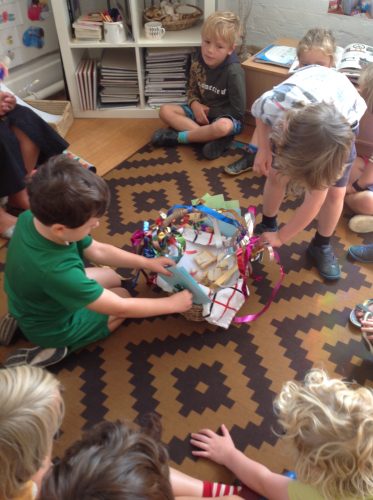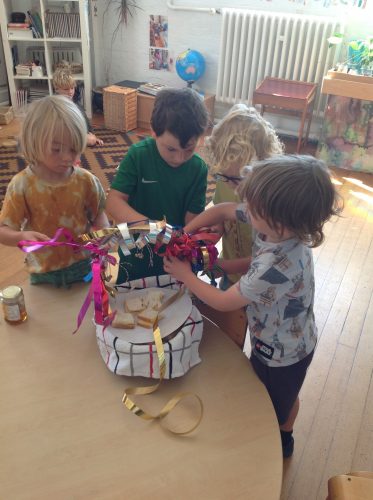W/C 2nd May 2022
A letter was received from Percy the Park Keeper, asking for our help; Percy had spotted an unfamiliar butterfly in the park and wondered if we could help him identify it.
The children thought about how we could help:
“We could look on the computer”
“We could find a video about butterflies which might help us”
“Use fact books to find out”
“I know someone who is a lepidopterist and I could ask her”
We enjoyed researching together
We found out the butterfly is an Alicides Metaurus from North Queensland, Australia.
We studied a world map to find out where Australia is
Following on from the children’s line of enquiry, a butterfly kit was set up in the room to allow the children to observe the miracle of metamorphosis first hand. We will be keeping a weekly diary of the changes
W/C 9th May 2022
We made a start with the first entry of the weekly butterfly life cycle diaries
A new and exciting attraction was added to the park this week, to house all of the butterflies the children have made
We will be using the new butterfly house to develop mathematical language over the next few weeks – looking at patterns, symmetry, and counting
W/C 16.05.22
We continued to observe the caterpillars, and created our own diaries to record these changes
The children were very excited to witness these changes, and were very lucky to catch the final butterfly as it emerged from the chrysalis and was released into the environment.
Alongside this the children used their knowledge of butterflies to imagine a new species. They made a fact sheet for their butterfly, including name, the countries where it is found, and what it likes to eat. We used a map of the world to locate these countries, using vocabulary such as continent, oceans and the names of the countries.
“There is a North and a South Atlantic ocean”
“Scotland is at the top of England”
A continent is lots of countries”
“Africa isn’t a country it’s a continent”
“Russia is the biggest country”
“Australia is at the bottom of the world. When it is day here it is night there.”
At the end of the week we celebrated the upcoming Queen’s Platinum Jubilee by making Union Jack bunting, crowns, sandwiches and iced buns. Here are some thoughts of what the Jubilee means to the children
“The Queen is a really important lady. She is really old now”
‘The Queen works really hard for our country”
“We are celebrating the anniversary of when she was crowned”
“My neighbour is putting up bunting and lights. We are going to have a party with them”
“I’ve made a Union Jack for my neighbour’s party”
“The Queen loves trifle and so does my Nanny”
“This is a very serious occasion”
W/C 23.05.22
As well as observing the changes in the caterpillars, we have also been looking closely at the growth of plants. The children investigated a range of seeds before planting – looking at shape, size and texture – and then designed their own seed packet for their original seeds. New species such as a Doughnut Tree, the Vegan Magnum Tree and a Rainbow Tree, to name a few, were created. The seed packets included information including ideal growing conditions and the amount of seeds in the packet.
W/C 06.06.22
Our success as problem solvers has spread around Storyland, and we arrived back after half term to another letter asking for our help. This time the letter was from Mr. Grinling from The Lighthouse Keeper’s Lunch
As a team, one of our strengths is proposing solutions, asking further questions and sharing ideas
“We could get a bird scarer”
“We could make the picnic basket noisy. Putting bells on it”
“Maybe they wouldn’t like bright colours”
“Like the story, we could put things they don’t like eating in the basket’
We spent some time sharing knowledge the children already have about what a lighthouse looks like, what it does, and the possible role of the lighthouse keeper
“The lighthouse tells boats to keep away”
“The lighthouse is a very tall house”
“A lighthouse is a building with a flashing light, warning sailors and boats to keep away from rocky islands”
From this we decided to build our own lighthouse
W/C 13.06.22
We have received yet another letter, this time from Mr Grinling’s cousin who operates a lighthouse on the island of Jersey
In response to Clarissa’s letter the children had these suggestions:
“Electricity may have stopped because there is not enough power to make it work”
“The battery might have died”
“Some lighthouses have solar panels. The solar panel may have got dirty so no sun can get through”
“It might be a very cloudy day so the clouds might have gone over the sun and turns the solar panels off”
This discussion generated one fairly important question, as we realised that to be of any help we need to know how Clarissa’s lighthouse is powered. The Year One children went on to independently write a letter to Clarissa
We look forward to Clarissa’s reply.
W/C 20.06.22
While we wait for a reply from Clarissa we have been finding out more about lighthouses. We have studied a map of the United Kingdom and identified the locations of Mr Grinlings’ and Clarissa Jones’ lighthouses – Land’s End and Jersey respectively. Representations of these lighthouses have been painted in watercolours and then added to the map.
While studying the map we investigated the four capital cities of the United Kingdom, as well as oceans and seas. We also discussed the geographical features on the map, including bays, coast, peninsula, island and estuary.
“A peninsula is a piece of land that sticks out into the sea”
“An island is a piece of land surrounded by water”
“A mouth of a river sometimes flows into the bay”
“The coast is land next to the sea”
W/C 27.06.22
Just like the story ‘The Lighthouse Keeper’s Lunch’, we now have a rope suspended between the coast and our lighthouse to be used to deliver the daily basket of food to the lighthouse keeper.
The children started by looking at a simple box net which they used to make a basket. We talked about the shapes in the net, and then the children drew a picture of a picnic along with a list of the foods they would like in their baskets. A cover was made to keep the food safe, and this was decorated in a repeating pattern.
W/C 04.07.22
The beans we planted earlier in the spring are thriving under our care, and we took the opportunity this week to use them for a maths investigation. The children worked together measuring and comparing the beans, using language such as centimetres, tallest and shortest. We also looked again at the parts of a plant, namely roots, seed, stem and leaves
Storyland Problem Solvers have continued writing in their weather diaries, looking at the weather patterns in either Lands End or Jersey
Our week ended with the most exciting visit to Jimmy’s Farm. We spent our day looking at the animals – a highlight was watching the release of the newly hatched butterflies in the Butterfly House – picnic lunch, den building in the woods and finishing with an ice cream and a bounce on the bouncy pillow
W/C 11.07.22
The children all enjoyed taking part in our Summer production of Dragon Days
Storyland Problem Solvers solved their final problem as the term draws to an end. All that we have learnt over these past few weeks enabled us to successfully solve the issue of just how Mr Grinling was to get his lunch without those pesky seagulls eating it. Here are some of the proposed solutions
“Lock it up with a padlock and tie it up with string”
“Make a scarecrow and put it in with the sandwiches”
“Put the jam sandwiches at the bottom and the mustard ones on the top”
“Put shiny stuff on the basket”
“Lots of bells onto the basket to make a noise”
Happily, Mr Grinling received his lunch – in fact, he wasn’t able to eat it all and so shared it with Storyland Problem Solvers. Another happy client!
We wish you all a happy summer!
